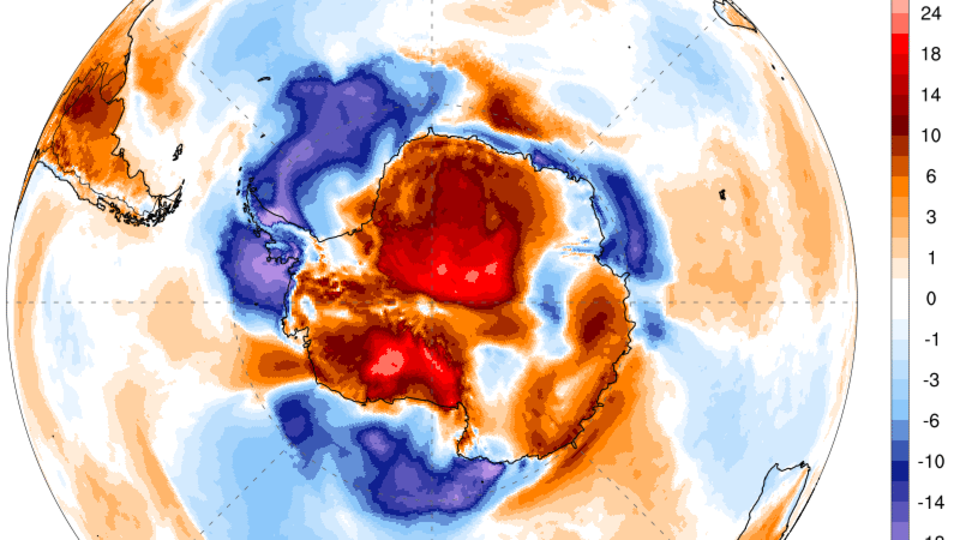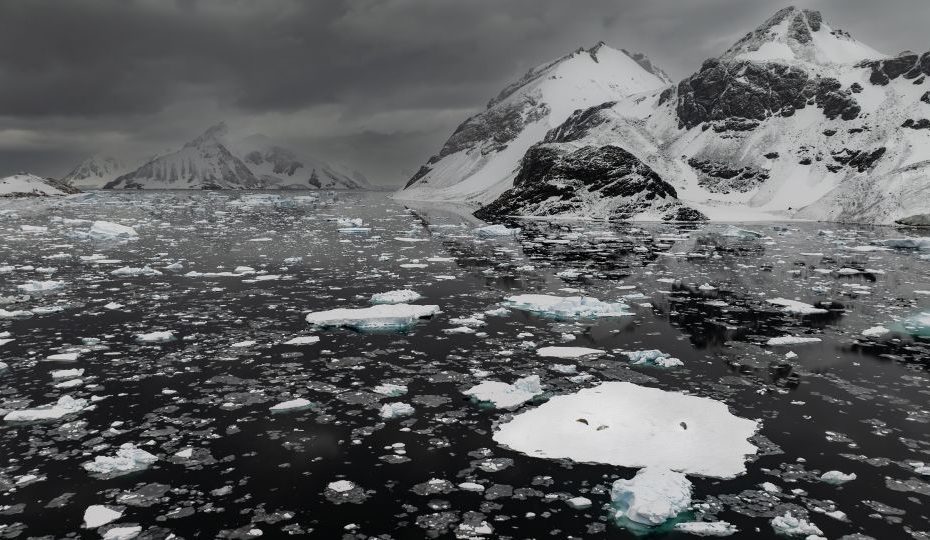A record-breaking heat wave at the coldest time on Earth has scientists worried about what it means for the future health of the Antarctic continent and the impact it could have on millions of people around the world.
Since mid-July, temperatures in parts of Antarctica have risen by as much as 10 degrees Celsius above normal and the unusual warmth could last until the first half of August.
The latest data show that high temperatures in parts of East Antarctica, where the most abnormal conditions persist, which normally range between -58 and -76 degrees Fahrenheit, are now closer to -13 to -22 degrees Fahrenheit.
That's cold, but in Bismarck, North Dakota, it's been -20 degrees Celsius at least once every year since 1875. The typical Antarctic winter cold should be incomprehensible to most people in the U.S.
Summer heat in the middle of winter – even though much of the continent is still below freezing – is an alarming development for a place that is more capable than any other of triggering catastrophic sea level rise as fossil fuel pollution continues to drive up global temperatures.
Most of the planet’s ice is stored here, and if it all melted, the average global sea level would rise by more than 150 feet. Even smaller icy features, such as the so-called Doomsday Glacier, could raise sea levels by 10 feet if they melted – catastrophic amounts for the world’s coastal communities.
David Mikolajczyk, a meteorologist at the Antarctic Meteorological Research and Data Center at the University of Wisconsin-Madison, said it’s possible that more heat waves like this will occur in the future, making the icy continent less resilient to its warmest season, summer, and more vulnerable to melting during subsequent heat waves.
Increased Antarctic melting could also potentially alter global ocean circulations, Mikolajczyk told CNN. These circulations play an outsized role in making the planet's climate habitable.
“I'm sure more (effects) will come to light over time as we understand (this heatwave) better, but at the moment it's just a matter of amazement at what we see,” said Thomas Bracegirdle, deputy science leader of the British Antarctic Survey's Atmosphere, Ice and Climate team.


Bracegirdle told CNN that the temperatures in this event were record-breaking and an important signal of what could be to come in the longer term. Heat waves of this magnitude should be fairly rare in Antarctica and scientists aren't yet certain if they'll happen more often, but that could change.
“The only thing we can say at this point is that we expect more extreme temperatures (in Antarctica) as the climate changes, but for this particular event we'll need to do more research,” Bracegirdle said.
According to an analysis by the European Union's Copernicus Climate Change Service, the meteorological service also contributed significantly to the warmest day ever recorded in late June.
This is the second major heat wave to hit Antarctica in the past two years. The previous one in March 2022 saw temperatures in some locations reach 70 degrees above normal, the most extreme temperature anomalies ever recorded in this part of the planet.
That unprecedented heat wave was made worse by climate change, according to a 2023 study published in Geophysical Research Letters. Climate change contributed 3.6 degrees of warming to the heat wave and could make similar heat waves worse by 9 to 10.8 degrees Fahrenheit by 2100, the study found.
According to Ted Scambos, a glaciologist at the University of Colorado Boulder, the current heat wave has not resulted in temperature differences reaching 2022 levels, but it is much more extensive and prolonged.
The crucial differences between the two have to do with what happens in the atmosphere.
'A very unusual event'
According to Bracegirdle, the set of atmospheric conditions largely responsible for the ongoing heat wave – a collapse of the southern polar vortex – will occur on average only once every two decades.
“This is a very unusual event, from that perspective,” Bracegirdle added.
As in the Northern Hemisphere, the Southern Hemisphere experiences a polar vortex: strong winds that circulate high in the atmosphere and trap cold air.
But when the southern polar vortex is disrupted, it releases cold air trapped above Antarctica and sends bursts of it further north. This also leaves the door open for air to flow down from the upper atmosphere, warming as it goes.
According to Amy Butler, a research physicist at NOAA’s Chemical Sciences Laboratory, the southern polar vortex is disrupted much less often than its northern counterpart, which explains why these types of heat waves are much less common.
This polar vortex disruption began in the second half of July and could last into the first half of August, possibly peaking in intensity in about a week, Butler told CNN. This will keep surface temperatures high.
At the same time, multiple warm air currents from the southwestern Indian Ocean swept across East Antarctica, which covers about two-thirds of the entire continent. Each warm air current was followed so quickly by another that the warming has been nearly continuous over the past few weeks, Scambos said.
East Antarctica, home to the South Pole, is home to some of the coldest conditions on Earth and is typically protected from these extremes of heat, Mikolajczyk said. But that wasn’t the case in this event or the 2022 one.
It is part of a larger trend, the consequences of which are already visible.
A 2020 study published in the journal Nature Climate Change found that between 1989 and 2018, the Antarctic warmed more than three times as fast as the global average.
West Antarctica and the Thwaites “Doomsday” Glacier have been a major focus of scientific research in recent years because of the catastrophic impact their collapse would have on sea level rise. But other research in recent years has shown that melting in East Antarctica, where this heat wave is occurring, is becoming just as worrying.
The recent warmth has posed a major problem for the continent’s crucial ice sheet. Antarctica lost a whopping 280 percent more ice mass in the 2000s and 2010s than it did in the 1980s and 1990s, according to a 2019 study published in the Proceedings of the National Academy of Sciences.
“I think the feeling in recent years has been that the Arctic is where all the rapid change happens and (change) happened quite slowly in Antarctica,” Mikolajczyk mused. “But this is just another event that shows that (change) can happen quickly in Antarctica as well.”
For more CNN news and newsletters, create an account at CNN.com

